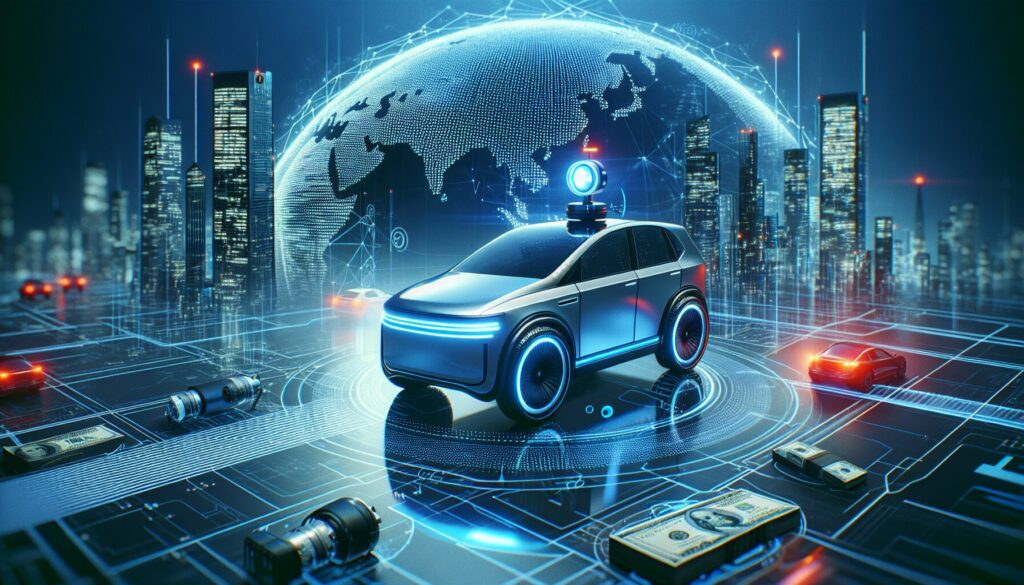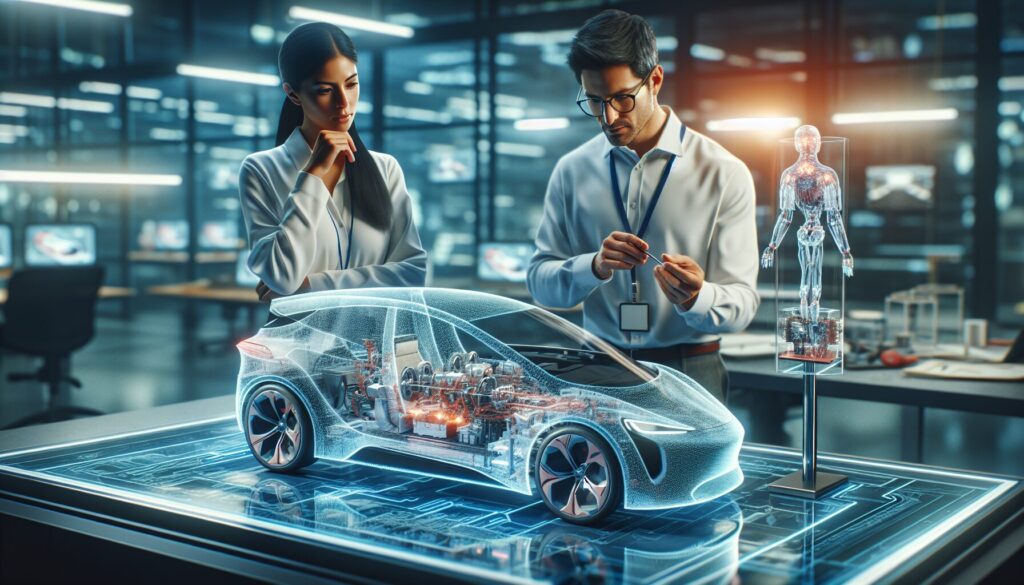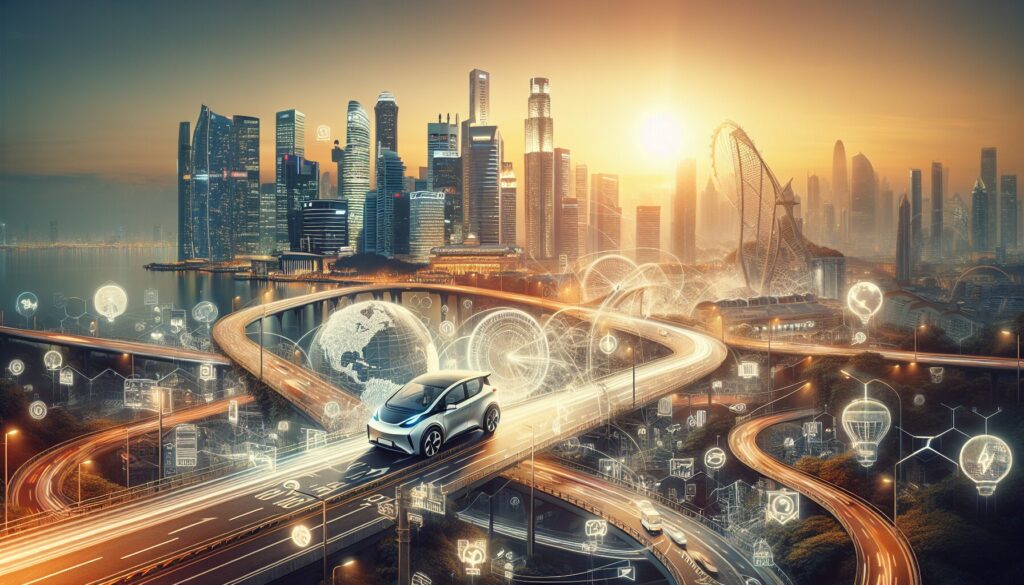Imagine hopping into your car, ready for a road trip, and it drives itself! That’s the magic of autonomous vehicles. They’re not just any cars; they’re electric, eco-friendly, and packed with cutting-edge tech. A while ago, I had the chance to ride in one of these marvels, and wow, was it fascinating! The car used LiDAR sensor technology, which is like giving the vehicle its own pair of eyes. It scanned the environment in real-time, ensuring a smooth and safe drive. But that’s not all. These vehicles communicate with their surroundings through Vehicle-to-Everything (V2X) tech, sharing data with traffic lights and even other cars. And the brains behind it? Deep Reinforcement Learning algorithms, which allow the car to learn and adapt like a pro. Companies like Tesla and Waymo are at the forefront, making these futuristic rides a reality. Let’s dive deeper!
Key Technologies Driving Innovation
There’s something truly magical about the technologies propelling the world of autonomous electric vehicles forward. Picture this: you’re cruising down the highway, sipping your favorite coffee, while your car navigates the road with precision. It’s not just a dream anymore! At the heart of this innovation are several key technologies that make this possible.
First up, we’ve got LiDAR sensor fusion algorithms. These are like the eyes of the car, using lasers to create detailed 3D maps of the surroundings. I remember chatting with a friend who works in this field, and they explained how these sensors gather data in real-time. They work with radar and cameras to provide a comprehensive view of the environment. It’s like having a superpower, seeing things that are normally invisible!
Then, there’s the Advanced Driver Assistance Systems (ADAS) architecture. This technology is the backbone of many self-driving features. It includes adaptive cruise control, lane-keeping assist, and automatic emergency braking. I once had the chance to test drive a car equipped with ADAS, and let me tell you, it felt like having a co-pilot who never gets tired or distracted. The system uses a network of sensors and cameras to ensure you’re always safe on the road.
Communication and Connectivity
Another game-changer in this space is Vehicle-to-Everything (V2X) communication protocols. Imagine your car talking to other cars, traffic lights, and even pedestrians. That’s V2X in action! It’s all about making the roads safer and more efficient. Ford Motor Company is one of the leaders in implementing this technology. They’ve been working on creating a seamless network where vehicles can share information about traffic conditions, road hazards, and more.
Furthermore, the role of artificial intelligence can’t be understated. AI in autonomous vehicles processes vast amounts of data to make split-second decisions. It learns from every mile driven, improving its performance over time. Companies like Tesla are leveraging AI to push the boundaries of what these vehicles can do.
Lastly, the integration of renewable energy sources is crucial for sustainability. Many autonomous vehicles are electric, reducing reliance on fossil fuels. This shift not only helps the environment but also supports the growing infrastructure for green energy. Charging stations are popping up everywhere, making it easier for electric vehicles to hit the road.
These technologies are transforming the way we think about transportation. They’re not just concepts on paper; they’re working together to create a future where driving is safer, cleaner, and more enjoyable.
The Role of AI in Vehicle Autonomy

Picture this: you’re cruising down the highway in your autonomous electric car, the wind in your hair, and your hands off the wheel. It almost feels like a scene from a sci-fi movie, doesn’t it? But it’s all thanks to the incredible role that artificial intelligence (AI) plays in vehicle autonomy. Let me take you on a little journey to explore how this magic happens.
A few months ago, I had the chance to test drive a vehicle equipped with advanced AI systems. The experience was nothing short of awe-inspiring. The car utilized LIDAR sensor technology, which is like the car’s eyes. These sensors send out laser beams to create a detailed 3D map of the surroundings. This enables the car to detect objects, pedestrians, and other vehicles with pinpoint accuracy. It’s like the car has its own superpower vision!
However, sensors are just one piece of the puzzle. AI’s real magic comes from deep learning neural networks. These networks are designed to mimic the way our brains work. They help the car make decisions by processing vast amounts of data in real-time. It’s like having a super-smart co-pilot always analyzing the best routes, traffic patterns, and potential hazards.
Communicating with the World
But wait, there’s more! Vehicle-to-Everything (V2X) communication is another fascinating aspect of AI in autonomous vehicles. This technology allows the car to talk to other vehicles, traffic lights, and even smart city infrastructure. Imagine your car knowing about a traffic jam miles ahead, thanks to real-time data exchange. It’s like having a crystal ball predicting traffic conditions!
Additionally, major players in the industry, like Tesla and Waymo, are pushing the boundaries of what’s possible. They’re not just focused on the technology inside the car but also on how these vehicles interact with the world. As reported by Forbes, these advancements are rapidly shaping the future of transportation.
In conclusion, AI is the heart and soul of autonomous electric vehicles. It’s what enables them to see, think, and communicate with the world around them. Whether it’s LIDAR sensors mapping the environment or deep learning networks making split-second decisions, AI is driving us into a new era of mobility. So, next time you see an autonomous vehicle cruising by, remember the incredible technology making it all possible!
Challenges and Opportunities in the EV Industry

Oh, let me tell you all about the rollercoaster ride of the electric vehicle (EV) industry here in the U.S.! It’s a mix of exciting opportunities and a few speed bumps along the way. Picture this: the autonomous electric vehicle realm is buzzing with cutting-edge tech like LIDAR sensor technology and neural network-based path planning. These innovations are driving us toward a future where cars practically think for themselves. But, as with any tech revolution, there are challenges to tackle.
First off, let’s talk about the hurdles. One biggie is the infrastructure, or the lack thereof. The U.S. is vast, and while we’re seeing a rise in charging stations, it’s not quite there yet. Imagine going on a road trip and having to plan your stops around where you can juice up your car. That’s a headache we aim to avoid. Moreover, integrating V2X communication protocols, which allow vehicles to interact with everything around them, is crucial but complex. This tech needs a robust network to function seamlessly, and that’s still a work in progress.
Regulatory Challenges and Market Opportunities
Regulations also play a significant role. Each state can have different rules, making it tricky for manufacturers to navigate. It’s like trying to bake a cake with different ingredients in every state — quite the recipe for confusion! However, this challenge opens up a world of opportunity. There’s a growing demand for uniform standards, and whoever cracks that code will be a game-changer.
Now, on the flip side, the opportunities are just as thrilling! The push for cleaner air and reduced emissions is a massive driver for the industry. Government incentives and subsidies are encouraging both manufacturers and consumers to go electric. Plus, the tech is evolving at breakneck speed. Imagine cars with enhanced safety features, thanks to artificial intelligence and advanced sensor arrays. It’s like having a guardian angel on the road!
Companies like Tesla and Waymo are leading the charge, investing heavily in research and development. They’re not just creating cars; they’re crafting experiences. With autonomous technology, we’re looking at a future where our vehicles are extensions of our living spaces. The convenience factor is off the charts. Think of it as having a personal chauffeur, minus the small talk!
In conclusion, while the road to widespread autonomous electric vehicle adoption has its bumps, the potential rewards are immense. As the industry navigates these challenges, the opportunities for innovation and growth are boundless, paving the way for a cleaner, smarter future on wheels.
Impact of Electric Vehicles on Urban Mobility

Imagine cruising through a bustling city without ever touching the steering wheel. How cool is that? Autonomous electric vehicles (AEVs) are redefining urban mobility in ways we could only dream of a few years ago. I remember my first ride in an AEV—it was like stepping into the future! The car’s LiDAR sensors, expertly calibrated, scanned the environment with laser precision. These sensors, combined with cameras and radar, create a comprehensive 3D map of the surroundings. This technology ensures the vehicle knows exactly where it is, down to the centimeter.
In addition to LiDAR, there’s something called V2X communication. Ever heard of it? It’s fascinating stuff! V2X stands for vehicle-to-everything communication. This means the cars can talk to traffic lights, other vehicles, and even pedestrians’ smartphones. It’s like having a conversation on the road, making traffic flow smoother and safer. When your car can communicate with a traffic light to know when it will change, you’re not just saving time—you’re helping to save energy, too!
Deep Learning and Urban Efficiency
Now, let’s chat about deep reinforcement learning. It’s a type of artificial intelligence that helps AEVs make decisions in real time. This technology processes vast amounts of data to plan the best route, avoid obstacles, and ensure a comfortable ride. It’s like having a super-smart co-pilot! These advancements are not just for show—they are making cities more livable. Autonomous electric vehicles reduce traffic congestion, lower emissions, and make public transportation more efficient. Imagine fewer traffic jams and cleaner air. Sounds like a win-win, right?
Moreover, cities are evolving alongside these innovations. Urban planning now incorporates charging infrastructure and smart traffic systems. Tesla and Waymo are at the forefront, pushing boundaries and setting new benchmarks. It’s exciting to see how these companies are integrating their technologies with city infrastructures, transforming urban landscapes. The ripple effect on local economies is substantial, creating jobs and attracting tech-savvy businesses.
The journey doesn’t stop here. As technology advances, the impact of autonomous electric vehicle technologies on urban mobility will continue to grow. More efficient batteries, improved AI algorithms, and better connectivity will further revolutionize how we move through cities. The future is bright and electrifying, and I can’t wait to see where it takes us next!
Future Trends in Autonomous Vehicle Technologies
Imagine cruising down the road in a car that practically drives itself—pretty cool, right? It’s not just sci-fi anymore. The future of autonomous electric vehicle technologies is closer than you might think, and there are some fascinating trends on the horizon. Let’s dive into a few that are making waves in the industry.
Lately, I’ve been obsessed with the advancements in Lidar sensor calibration. These sensors are like the eyes of autonomous vehicles, using laser light to create high-resolution maps of surroundings. It’s crucial for the sensor to be precisely calibrated to ensure accurate data for navigation. A few months ago, I visited a tech expo and saw a demo of a new Lidar system. It used machine learning to self-calibrate, adapting to different environments on the fly. Pretty neat, right?
Connectivity and Communication
Now, let’s talk about V2X communication protocols. They’re all about how vehicles communicate with each other and infrastructure like traffic lights. This tech helps cars share information about road conditions, traffic jams, and even potential hazards. I remember chatting with an engineer from Ford Motor Company who explained how V2X could reduce accidents by allowing cars to “talk” and make smart decisions faster than a human can blink. It blew my mind!
Deep learning algorithms are another game-changer in autonomous driving. These algorithms process massive amounts of data to help vehicles understand their environment. They identify objects, predict pedestrian movements, and make driving decisions. I recently read about a deep learning model that improved vehicle perception accuracy by 20%. It’s fascinating how these algorithms are getting smarter every day.
Finally, let’s not forget the role of sustainable energy in this equation. With electric vehicles leading the charge (pun intended), the integration of renewable energy sources is crucial. Companies like Tesla, Inc. are investing in solar energy to power their autonomous fleets. This shift not only reduces carbon emissions but also aligns with the global push for greener technologies.
So, whether it’s advanced sensors, smarter algorithms, or greener power sources, the future of self-driving vehicles is bright. Can’t wait to see where these innovations take us next!
Conclusion
Ultimately, the transformative journey of autonomous electric vehicles is reshaping the future of transportation, blending cutting-edge technologies like LiDAR, AI, and V2X communication with sustainable energy solutions. These innovations promise not only to revolutionize urban mobility and drive industry growth but also to create a cleaner, safer, and more efficient world. As we embrace these advancements, the potential for a new era of mobility is limitless. So, buckle up and get ready for the ride of the future!
Continue Exploring
Unlock the secrets to maximizing efficiency and avoiding costly errors in your hydrogen fuel cell endeavors. Don't miss out on essential insights that could transform your approach.
Frequently Asked Questions
What are the key technologies driving autonomous electric vehicles in 2023?
The key technologies driving autonomous electric vehicles in 2023 include advanced sensor systems such as LiDAR, radar, and cameras, as well as sophisticated AI algorithms for real-time decision making. Additionally, electric powertrains, high-capacity batteries, and vehicle-to-everything (V2X) communication systems play crucial roles in the functionality and efficiency of these vehicles.
How do autonomous electric vehicles impact environmental sustainability?
Autonomous electric vehicles significantly impact environmental sustainability by reducing greenhouse gas emissions and reliance on fossil fuels. The use of electric powertrains eliminates tailpipe emissions, while autonomous systems optimize driving efficiency, leading to lower energy consumption. Additionally, the integration of renewable energy sources for charging further enhances their environmental benefits.
What are the safety measures implemented in autonomous electric vehicle technologies?
Safety measures in autonomous electric vehicle technologies include redundant sensor systems to ensure robust environmental perception, fail-safe mechanisms for critical system components, and advanced cybersecurity protocols to protect against hacking. Furthermore, these vehicles undergo extensive testing in real-world scenarios to ensure they can safely navigate complex traffic environments.


Leave a Reply